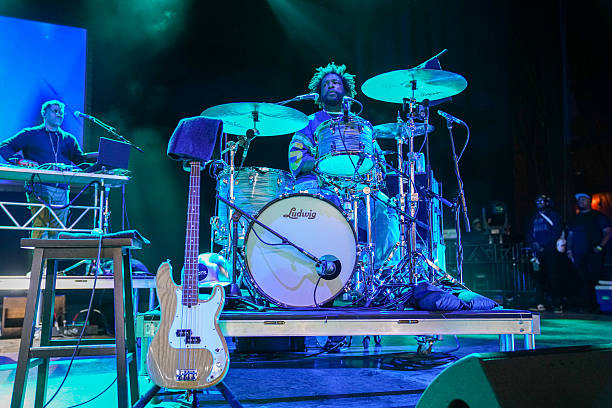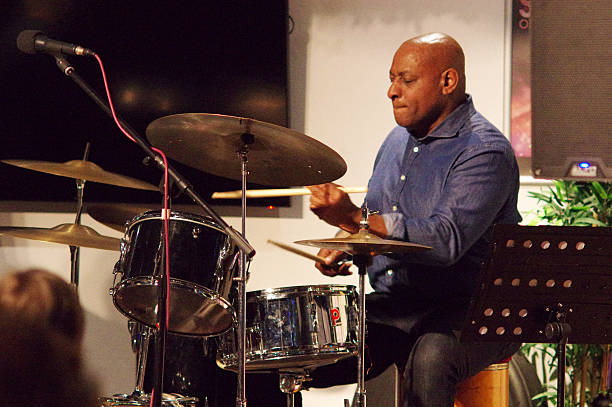Introduction: Silence Speaks Louder Than Notes
Every drummer eventually bumps into the same realisation: silence, the part between the notes, can sometimes speak louder than a full bar of busy fills. The longer you play, the clearer it becomes that great drumming isn’t about how many hits you can squeeze in. It’s about knowing when not to play and leave space.

Leaving space does something no flurry of doubles or triplets can. It gives weight to the next strike. It makes a groove breathe. It creates dynamics that grab attention instead of wearing it down. Some of the most memorable drummers in history have been those who valued space more than they put in.
1. Why Space Matters in Drumming
A. Space Enhances Emotional Impact
Imagine listening to a drummer who never stops hitting. Every gap is filled, every bar is packed. After a while, the ear just stops reacting. But let one hit ring, let a cymbal swell hang in the air, and the next snare shot suddenly feels like thunder. Silence builds tension. When it’s broken, the release hits harder.
B. Simplifying Builds Musical Authority
Holding back isn’t about being timid. It’s about trust in the song, in the groove, and in your time feel. Drummers who simplify show they’re not relying on flash to prove themselves. That kind of maturity commands respect. The band feels it. The audience feels it too.
C. Space Invites the Band and the Listener In
A sparse beat creates breathing room. In a live setting, that gives the singer or the guitarist room to shine. For the listener, it means clarity, the groove becomes the backbone, not clutter. Space is what turns a busy rhythm into music people actually want to hear twice.
2. Famous Drummers Who Master Space
Steve Jordan – Famous for grooves that feel heavy without ever being crowded. Jordan often plays less than you’d expect, and that restraint is exactly why every note he does hit feels so strong.
Questlove – His halftime funk grooves live on space. He lays so far back on the beat that the silence between his notes becomes part of the pocket.
Ringo Starr – Constantly underestimated, but he knew exactly what not to play. His fills were short, intentional, and always about making the song move.
Charlie Watts – With the Rolling Stones, he would famously drop his right hand on the hi-hat when hitting the snare. That tiny piece of space gave the backbeat more punch.
Tony Williams – Even in jazz, where speed and chops run high, Williams used silence to create suspense before exploding into flurries.
3. Techniques to Use Space Effectively
A. Practice Rests as Power Moves
Don’t think of rests as nothing. Think of them as something. Try this: play three bars of groove, then leave the fourth empty. The silence won’t sound like a mistake, it’ll sound intentional if you land back in clean.
B. Dynamics Over Density
Instead of adding notes, change how hard you play. Play one bar loud, then pull back to a whisper. A single cymbal roll played softly can cut through more than a stack of crashes.
C. Use Ghost Notes
Ghost strokes are a way of filling silence without clutter. They keep the rhythm moving but don’t distract from the main hits. Whispered notes on the snare can make a groove feel alive while still leaving open space.
D. Think Phrase, Not Measure
Music isn’t about filling bars, it’s about communicating ideas. Don’t play a fill just because the measure ends. Ask yourself: Does this line finish the phrase, or am I just moving for the sake of it?
4. Framing Space: Building Shape in Your Groove
A. Create Musical Phrasing
Play your groove like you’d speak a sentence: with commas, pauses, and full stops. Two bars of groove followed by two bars with rests or accents feels alive. Eight straight bars of machine-like hits often don’t.
B. Contrast Builds Attention
Alternating busy and quiet moments keeps the listener engaged. A stripped-down verse followed by a loud chorus always feels more powerful than nonstop energy.
C. Ebb and Flow in Soloing
Solos aren’t about filling every second. The best solos breathe. Say an idea, pause, then respond to yourself. Listeners follow your phrasing because the silence gives them time to absorb it.
5. Drills to Build an Ear for Space
- Silent Bar Drill – Play three bars, leave the fourth empty. Notice how strong the return feels.
- Ghost-Note Lines – Play a simple accented rhythm and use ghost notes in the gaps. You’ll feel the groove without cramming.
- Volume Shifts – Practice four-bar phrases where the only change is volume: crescendo up, then down. It teaches you control without extra hits.
- Call-and-Rest Drill – Play two bars, then rest one bar, and repeat. The silence becomes part of the rhythm.
Extra challenge: record yourself and listen back. Gaps that feel scary while you play often sound amazing in playback.
6. Style-Specific Applications
Jazz & Ballads – Space is everything. Brushes, soft cymbals, and hushed snare work can say more than loud chops. Silence becomes part of the poetry.
Funk & R&B – The pocket thrives on air. Don’t flood the backbeat, leave room for the bass and keys to move. Think of the silence as the real funk.
Rock & Pop – Even in high-energy songs, leaving a beat open before a chorus makes the crash feel massive. Silence before the storm always works.
Metal & Hardcore – Yes, even here. Breakdowns often hit hardest when there’s a sudden stop or gap before the drop. The silence makes the chaos explode.
Avoiding Common Pitfalls
Silence isn’t laziness. It’s not avoiding work. It’s making a choice. The danger is when silence feels timid instead of intentional. That’s why you have to practice it.
Some drummers also rush to fill every gap because they’re uncomfortable with space. It takes discipline to sit in the pocket and not prove yourself with chops. Remember: restraint is a skill, too.
FAQs: The Power of Space in Your Playing
1. Is space useful in fast genres like metal?
Yes. A quick pause before a blast beat or breakdown makes the return heavier. Even extreme music needs breathing room.
2. How do I practice space without sounding boring?
Use call-and-response grooves. Let ghost notes whisper in the background. Work with volume instead of fills. Boring happens when grooves don’t change, not when they leave gaps.
3. Can space improve timing?
Definitely. When you trust silence, you’re forced to lean on your internal clock. It sharpens accuracy because you can’t hide behind busy fills.
4. When is too much space too much?
When the song loses momentum. Space should build tension, not drain energy. If the music feels like it stalls, it’s time to bring notes back in.
Conclusion: Let Silence Be Your Sound
“Less is more” isn’t just a phrase: it’s a key principle. Leaving space makes your playing breathe, makes songs stronger, and shows confidence. The next time you sit at the kit, try dropping a beat instead of adding one. Leave the rest. Let the groove carry itself. You’ll notice everything else around you sounds clearer, fuller, louder, even when you play less.
